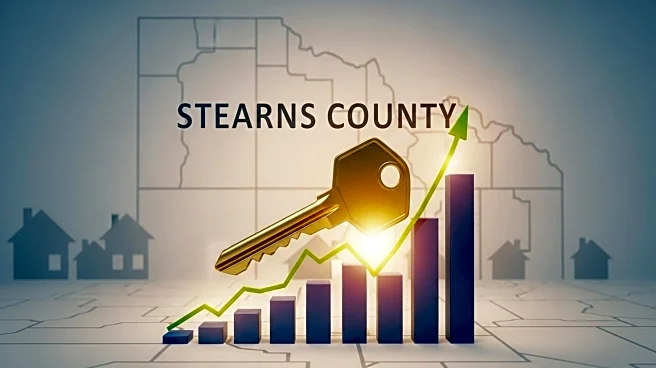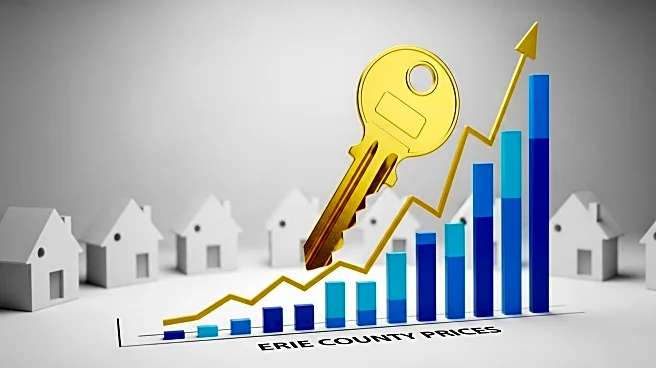What's Happening?
Recent data from Realtor.com indicates that home sales in Franklin County, Pennsylvania, experienced a decline in prices during July. The median home price fell to $275,000, marking an 8.3% decrease from June's median of $300,000. Despite this monthly drop, the median price was up 2.8% compared to July 2024's $267,400. Single-family homes saw an 8.9% decrease in median price from June, settling at $275,000. Condominiums and townhomes experienced a slight price decrease of 1.2%, reaching a median of $258,570. The overall number of recorded sales in the county dropped by 11.6% from July 2024, totaling $47 million in residential sales.
Why It's Important?
The decline in home prices in Franklin County could have significant implications for the local real estate market and economy. Lower home prices may attract more buyers, potentially increasing demand and stimulating the market. However, sellers may face challenges in achieving desired sale prices, impacting their financial planning. The broader economic context, including inflation and interest rates, could further influence market dynamics. Real estate professionals and local policymakers may need to adapt strategies to address these shifts and support both buyers and sellers in navigating the changing market conditions.
What's Next?
As the real estate market in Franklin County adjusts to these price changes, stakeholders may anticipate further fluctuations influenced by economic factors such as interest rates and inflation. Real estate agents and local government officials might focus on strategies to stabilize the market and support homeownership. Monitoring upcoming sales data will be crucial for understanding long-term trends and making informed decisions. Additionally, potential buyers and sellers may need to reassess their expectations and strategies in response to evolving market conditions.
Beyond the Headlines
The decrease in home prices in Franklin County may reflect broader economic trends affecting the housing market nationwide. Factors such as inflation, interest rates, and consumer confidence play a role in shaping real estate dynamics. The local market's response to these changes could offer insights into regional economic health and housing affordability. Long-term implications may include shifts in demographic patterns, with potential impacts on community development and infrastructure planning.










